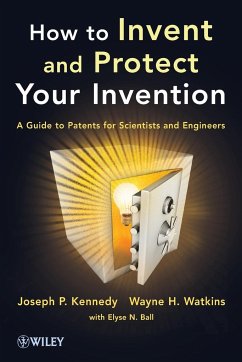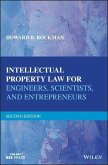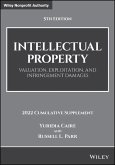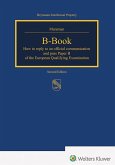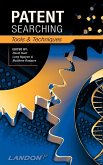A straightforward guide to inventing, patenting, and technology commercialization for scientists and engineers
Although chemists, physicists, biologists, polymer scientists, and engineers in industry are involved in potentially patentable work, they are often under-prepared for this all-important field. This book provides a clear, jargon-free, and comprehensive overview of the patenting process tailored specifically to the needs of scientists and engineers, including:
Requirements for a patentable invention
How to invent
New laws created by President Obama's 2011 America Invents Act
The process of applying for and obtaining a patent in the U.S. and in foreign countries
Commercializing inventions and the importance of innovation
Based on lecture notes refined over twenty-five years at The University of Akron, How to Invent and Protect Your Invention contains practical advice, colorful examples, and a wealth of personal experience from the authors.
Although chemists, physicists, biologists, polymer scientists, and engineers in industry are involved in potentially patentable work, they are often under-prepared for this all-important field. This book provides a clear, jargon-free, and comprehensive overview of the patenting process tailored specifically to the needs of scientists and engineers, including:
Requirements for a patentable invention
How to invent
New laws created by President Obama's 2011 America Invents Act
The process of applying for and obtaining a patent in the U.S. and in foreign countries
Commercializing inventions and the importance of innovation
Based on lecture notes refined over twenty-five years at The University of Akron, How to Invent and Protect Your Invention contains practical advice, colorful examples, and a wealth of personal experience from the authors.
"The book will be useful to graduate students, as well as educators, business professionals, non-patent attorneys, and engineers who want to learn about the role that patents play in turning inventions into socially benefi cial products." (Chemical Engineering Progress, 1 May 2013)
"Introducing an easy-to-read, jargon-free overview of the patent application process for scientists and engineers: How to Invent and Protect Your Invention: A Guide to Patents for Scientists and Engineers published by Wiley, is updated with the most recent changes to U.S. patent law that were made in Fall 2011." (Physorg, 27 November 2012)
"Introducing an easy-to-read, jargon-free overview of the patent application process for scientists and engineers: How to Invent and Protect Your Invention: A Guide to Patents for Scientists and Engineers published by Wiley, is updated with the most recent changes to U.S. patent law that were made in Fall 2011." (Physorg, 27 November 2012)

